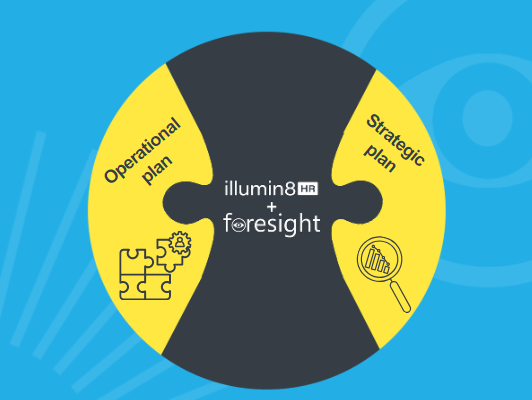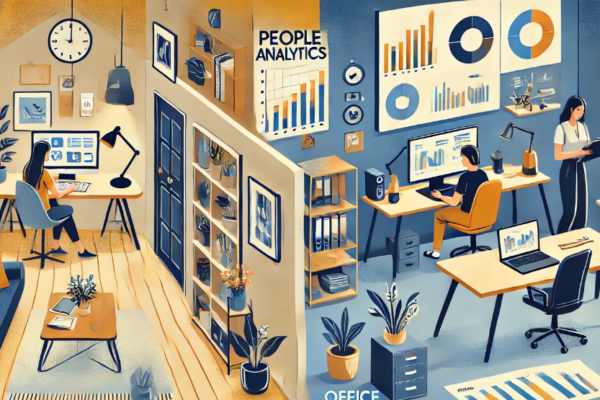When your clients ask about data services and tools, one of the most frequently asked questions is likely to be ‘what’s the difference between business intelligence and people analytics?’ In this article, we explain how people analytics goes above and beyond business intelligence to add value at a tactical and strategic level.
In a nutshell, business intelligence only gives you the ‘What’. People analytics also provides the ‘Why’ and the ‘What if’. It’s this critical difference that adds superior value to your clients.
But what does that look like in real life? Through the three short scenarios below, we illustrate the advantages that your clients will get from a people analytics solution rather than business intelligence tools.
1. Diversity, inclusion, equity and belonging
An organisation is underperforming on meeting its goals for building and developing a diverse workforce. Where does the issue stem from and how can data inform a change in the way the company hires and promotes more diverse talent?
In this situation business intelligence can identify the data points that show where diverse hiring and progression is not taking place. But it won’t automatically present you with outliers and identify the likely causes that are preventing the organisation from achieving this goal. Business intelligence won’t identify hiring managers where the hiring track record is poor for diverse candidates, and it won’t flag anomalies.
People analytics presents a number of advantages in this scenario, making it quicker and easier to get to the bottom of an issue. Firstly, a people analytics application will flag poor hiring records based on targets that your client sets, and it will allow senior managers to look at teams and individuals for signs of biased decision-making. Clients can see trends in how the impact is affecting overall workforce diversity and how this is likely to affect the organisation in future. Users can overlay this data with candidate pool diversity, promotion data and other factors that may be impacting hiring practices.
2. Employee wellbeing
Long-term sickness and absence is affecting productivity in some teams, and this is affecting overall company performance. Where are the underlying issues? And how can the company create a plan to address wellbeing?
In this scenario, business intelligence will present users with historical information. For example, if an employee has a concerning level of absence days, you’ll only discover this once a red flag has been raised. This means the organisation has missed opportunities to identify, investigate and address rising sickness levels as they happen.
Because people analytics is more predictive, it triggers early warning signals if the absence levels in a team, or for an individual, are rising or are outside of parameters set by the organisation. People analytics enables managers to drill down into the demographics and team dynamics, enabling a comprehensive approach to wellbeing. For example, by looking at sickness in certain locations, job roles, age groups and reporting lines, more informed actions can be taken and the impact on the business mitigated earlier.
Plus, by automatically linking sets of HR data to look for connections and anomalies, people analytics can also detect potential early indicators of stress and wellbeing concerns (such as falling engagement levels) that could lead to absence.
3. Skills supply
The organisation is suffering high attrition in an area where skills are in-demand and hard to find. How can data support a better retention strategy and save the business ongoing recruitment costs?
Using a business intelligence tool, users could review the skills of leavers and further analysis would be needed into likely causes. Using machine learning, people analytics solutions, like illumin8HR can predict trends and alert users to early warning signs, flagging individuals that have a high probability of leaving and where skills gaps are likely to arise.
People analytics also enables users to put action plans in place to address issues. Imagine a scenario in which illumin8HR flags high attrition in customer service agents aged under 25 in the last 12 months. The HR business partner drills down further asking the system whether the leavers were high performers? Had they had a pay review? Had they completed training? What is their reason given for leaving? Who was their manager? This information can be shared with managers or added to reports. An action plan can then be put in place, also within illumin8HR, in which the HR business partner can set targets, deadlines, progress updates and tasks to reduce future attrition in this team.
People analytics vs business intelligence in summary
- People analytics requires less technical expertise – with business intelligence tools you need to know what to go and look for, but people analytics brings insights to the attention of users automatically.
- People analytics is less manual – outliers are put in front of the user automatically, saving them time.
- People analytics helps to remove bias – whereas with business intelligence tools users still have to do the analysis of data manually. They will look for links in the data they expect to find and potentially miss other contributing factors.
Business intelligence tools have their place and are useful for showing the business what has happened. However, in terms of future focus or action planning, they do not have the capability of people analytics tools. People analytics can illuminate, and guide the organisation on, where people need to spend their time, what issues need to be tackled, and what the business impacts might be if action is not taken. People analytics is an integral part of the data-driven organisation.
To have an initial conversation about becoming a business-to-business partner for Activ8 Intelligence, get in touch.




